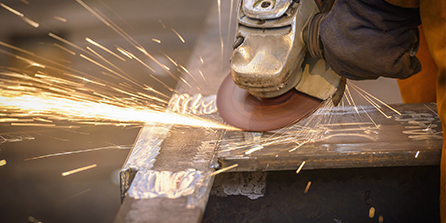Understanding the Price of 7% Grinding Wheels Factors and Trends
In the world of manufacturing and metalworking, grinding wheels are essential tools that play a critical role in various machining processes. Among the many types available, the 7% grinding wheel has garnered attention for its unique specifications and applications. This article will explore the pricing landscape of 7% grinding wheels, highlighting the factors influencing their cost and the current market trends.
What is a 7% Grinding Wheel?
Before delving into pricing, it’s essential to understand what a 7% grinding wheel actually is. These wheels are typically made from abrasive materials, such as aluminum oxide or silicon carbide, and are designed for use in processes like grinding, polishing, and cutting. The designation 7% usually refers to the concentration of abrasive material in the wheel. This specific concentration allows for efficient material removal while maintaining a fine finish, making these wheels ideal for tasks that require precision.
Factors Influencing the Price
1. Material Composition One of the primary determinants of the price of grinding wheels is the material used in their construction. High-quality abrasives, such as diamond or CBN (cubic boron nitride), can significantly raise the cost. In contrast, more commonly used materials may result in lower prices. The concentration of abrasive material—like the 7% description—also affects durability and performance, adding another layer to the pricing structure.
2. Manufacturing Process The method by which the grinding wheels are produced can affect their cost. Wheels made through advanced manufacturing techniques, such as precision casting or sintering, are often more expensive due to the higher costs of production and the resulting superior quality. Custom or specialized wheels designed to meet specific customer needs tend to command premium prices as well.
3. Brand Reputation Just like any other product, the brand of the grinding wheel can influence its price. Well-established brands with a reputation for quality and reliability often charge more than lesser-known brands. Buyers are typically willing to pay a premium for products that they trust to perform well.
7 grinding wheel price

4. Market Demand The demand for grinding wheels can fluctuate based on market trends. For instance, in times of increased industrial activity or manufacturing output, the demand for grinding wheels, including the 7% variety, can rise sharply, leading to higher prices. Conversely, during economic downturns, demand may decrease, putting downward pressure on prices.
5. Distribution and Shipping Costs The cost of distribution and shipping can also impact the final price of grinding wheels. If a supplier offers free shipping or has local distribution centers, customers may see lower prices. However, suppliers that need to ship from long distances may add shipping costs into the price of the product.
Current Market Trends
As of late 2023, the market for grinding wheels, and specifically 7% grinding wheels, appears to be on an upward trajectory. Several industries, including automotive, aerospace, and construction, are showing increased activity, thus driving demand for efficient grinding solutions. This surge in demand has led to an uptick in prices, with many suppliers adjusting their pricing structures accordingly.
Moreover, there is a growing trend towards sustainability in manufacturing. Many companies are now seeking eco-friendly grinding solutions, which can sometimes come at a higher cost. Wheels made from recycled materials or designed for longer life expectancy can be more expensive upfront but offer savings in the long run due to reduced waste and lower replacement rates.
Conclusion
Understanding the price of 7% grinding wheels involves considering multiple factors, including material composition, manufacturing processes, brand reputation, market demand, and distribution costs. As the market continues to evolve, manufacturers and suppliers will need to adapt to the demands of various industries while ensuring that their pricing remains competitive. For buyers, knowing these factors can aid in making informed purchasing decisions, ultimately leading to a more satisfying investment in these crucial tools.
Post time:Dec - 15 - 2024

















